#natural dyeing
Text
fiber arts tutorial links!
I’ve gotten quite a few asks about spinning, fiber prep, and dyeing, and since I’m utterly incapable of answering a question without writing an essay, they often turn into tutorials. I’ve compiled them here for easy perusal ! More will be added as I find and/or write them.
SPINNING
The basics of getting into drop spindles
A comprehensive guide on how to spin on drop spindles
Processing fleece on hair combs to get perfect hand combed top (a cheap fleece processing tool)
How to get your yarn off your spindle
How and why to block handspun yarn before using it
Niddy Noddy sizing
Blocking linen and cotton yarn
How to tell if your handspun yarn is over or undertwisted
Moving from park and draft spinning to suspended spinning
Debugging: roving twists and knots around the edges while spinning
Debugging: compressed roving
The visuals of 2 ply vs. 3 ply
Whittling supported spindles
Very short video-centric guide for supported spinning
FIBER PREP AND/OR DYEING
Steps of fleece processing, including the many methods and tools you can use
What prep to dye in
20 questions of natural dyeing
Dyeing with onion skin
How to clean a blending board
All about mordants
KNITTING
Knitting with chronic pain (more advice from others in notes)
3K notes
·
View notes
Text
Okay i am still procrastinating on a larger/more comprehensive post but heres some of the colors i have so far from lichens, both AM and BWM (Ammomia method, sometimes called ammonia fermentation but there's no actual bacterial activity; then the boiling water method, literally what it sounds like)
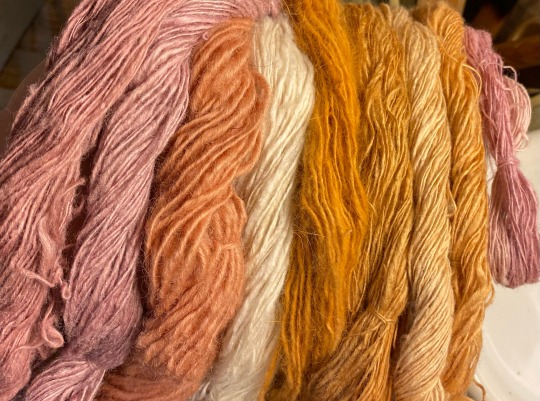

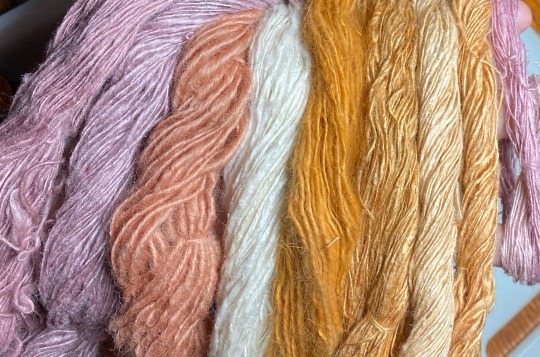
I took them under 3 different indoor light sources to try to show the variance of the colors, sadly not the sun as it is hiding behind the clouds as of late
from left to right: first two lavender-like purple are silk, dyed with an fuzzily-ID'd lecanora/ochrolechia like lichen that was AM prepared; the second one used the same lichens but prepared different (second ammonia soak)
the third one is wool using a similar lichen that was also AM prepared, i was almost worried it wouldnt work/i messed up the vat because i set the pH too low but surprisingly it didn't brown out and turned a lovely pink salmon color
the white is the base color of the silk
the fifth one is some french angora rabbit that i dyed using ruffle lichens via the BWM method; a lovely intense orange
the 6th and 8th were dyed with ruffle lichens (BWM) as well a long time ago so i don't recall the details
the 7th was dyed with usnea lichens (BWM) around the same time as 6 and 8
Finally, the last two tiny strings were AM dyed a long time ago and i almost forgot about making them!
Of course, all lichens should be collected from deadfall, not directly from a tree/rock/etc to avoid overharvesting. It's also important to keep chemical safety in mind if you work with ammonia, or even things like alum and vinegar!
All the yarn was spun myself on a drop spindle too, after dyeing the fiber clouds (very technical term i know)
I have more posts i want to make on lichen dyes and the making/using thereof once i get my head screwed back on correctly, specifically some recent shenanigans concerning the first three yarns! the chemical pigment itself, the history, the troubleshooting, etc. Which i think will be very cool
Bonus drop spindle, and a ruffle lichen comparison!

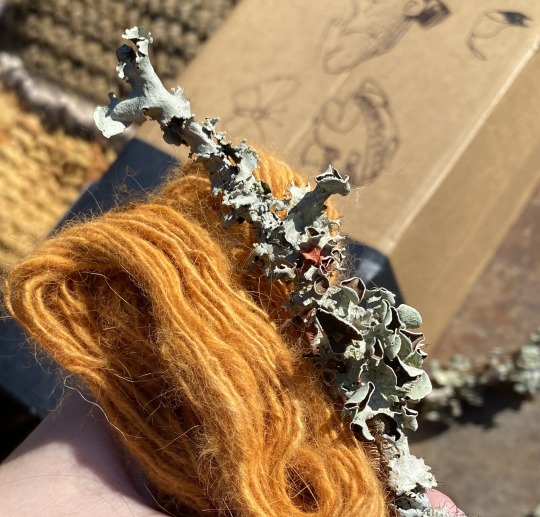
You can even see an orange spot on the otherwise minty slate green of the ruffle lichens where it had started to decompose!
#fiber arts#yarn#eri silk#wool#angora fiber#handspinning#natural dyeing#art#earth skills#crafts#ammonia fermentaion#lichen dyes#drop spindle
451 notes
·
View notes
Text

Yarn dyeing!
42 notes
·
View notes
Text

tried some natural dyeing with cochineal and walnut hulls. initially came out more pink than the red i was aiming for, but adding some brown helped
23 notes
·
View notes
Text
~🌺🌼⚘Squashed Flower Stays⚘🌼🌺~
This summer I followed a workshop on natural fabric dying or tataki zomé, or as I like to call it Squashed Flower Dyeing with a Hammer!

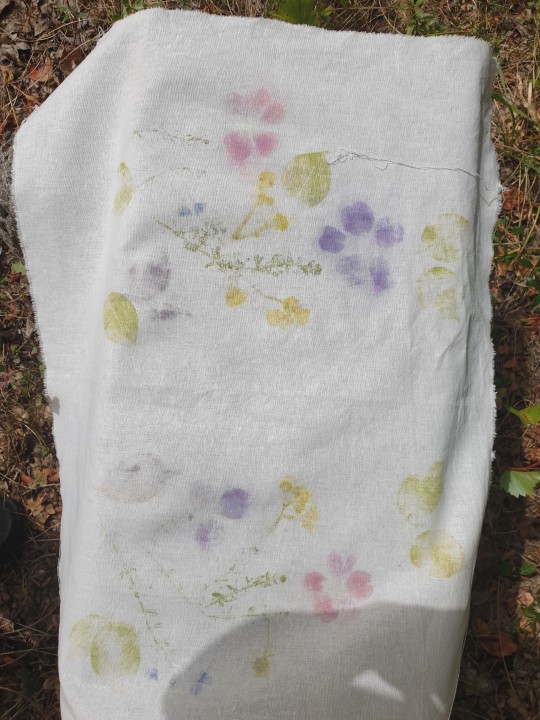
And me being who I am, I decided to immediately graduate from test strips into making fabric for stays.
The technique of this is that flowers naturally have pigments. If you place a fresh flower on some cotton or linen, sandwich it between some more linen and smash it with a big rubber mallet, those pigments get squashed in your fabric. You get a coloured squash print of a flower or leaf:

Then you wash your fabric in iron sulfate (your fabric goes yellow and your print goes black) white vinegar (your colours stay, reds go pink) or alun/aluin (your colours fix but go more purple).
The sad thing is, the colours fade very quickly. The fresher your leaf, the brighter the mark, but even the vibrant colours fade when they come into contact with the sun :(
Anyway, it turned out very interesting and was great fun to do for an afternoon:

Stay tuned for the turning it into stays part!
(Link here when I get to that)
#i was too busy hammering to actually take a picture of the mallet#my stays kept colour the best#i pre-treated the fabric in alun and afterwards put it in vinegar and did not wash it after#and ironing to fix it#a talia original#talia's adventures in dressmaking#excerpts from my life#sewing progress#squashed flower stays#the technique is Japanese#searching for it will probably give you the exact how to's#natural dyeing#this was hard on the hands#we all got blisters#great to experiment with though#sunflowers worked great at the start but faded terribly#grapevine actually kept it's colour#it's fascinating#i just found out that the English call it 'pounding flowers' so#make of that what you will
51 notes
·
View notes
Text
I found something delightful today
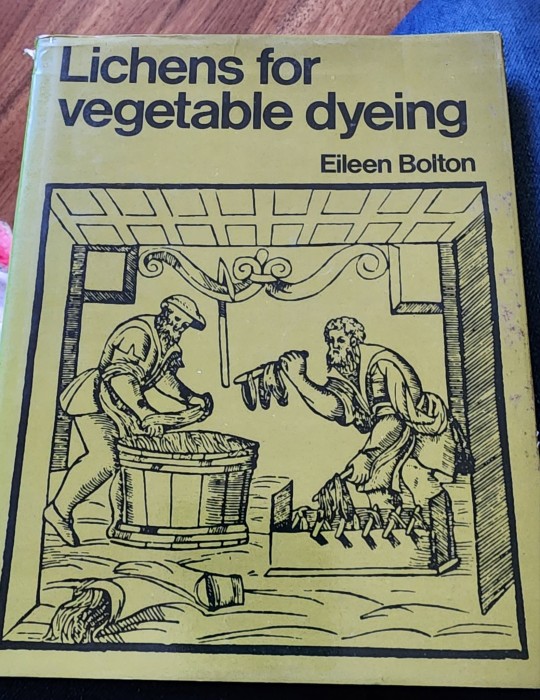
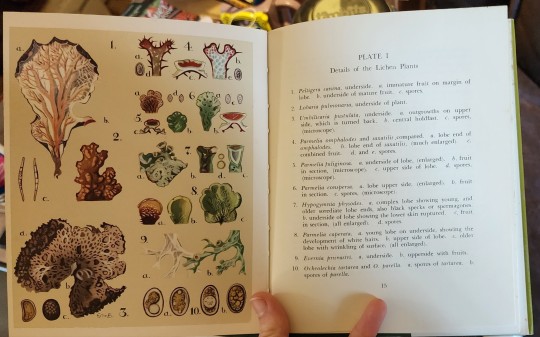
I kind of want to embroider the cover image
34 notes
·
View notes
Text

final color of the red onion skin batch of yarn! I'm so proud of how evenly it dyed, since this was my first try! I'll do a batch of yellow onion skin this weekend ^___^
#dyestuff#natural dyeing#natural dye#onion skin dyeing#dial p for post#the vest i'll knit from these will be sooo cute ^___^
12 notes
·
View notes
Text
So apparently pokeberry is a great dye plant. The berries and roots are used.
The berries are extremely pigmented and make a bright fuschia dye, but like all berry dyes it's not very colorfast and fades quickly. They're easy to collect and easy to dye with, only requiring vinegar as a mordant. Vibrant, if short-lived, color with ten million how-to articles.
The root is said to make, quoted from Wikipedia, "A fine red dye". I looked at the source from wikipedia, a brief description of plants of the Americas from the late 1700s, which goes into no more detail.
If I just search for pokeberry root, I get sold quack remedies and tinctures. If I search for pokeberry root dye, I get overwhelmed by results about dyeing with the berries.
The entirety of the plant is toxic to mammals. The root is the most toxic part, tea infused from it can kill an adult. I just want someone to tell me ANYTHING about how this dye was produced and used so I DO NOT get tempted to try it myself.
I'm going to be removing pokeberry plants from inconvenient spots in my lawn anyway this summer. WHAT IF i were to just. Tie the roots up to the rafters of the garage to dry out. Would that be too swamp hag of me.
68 notes
·
View notes
Text


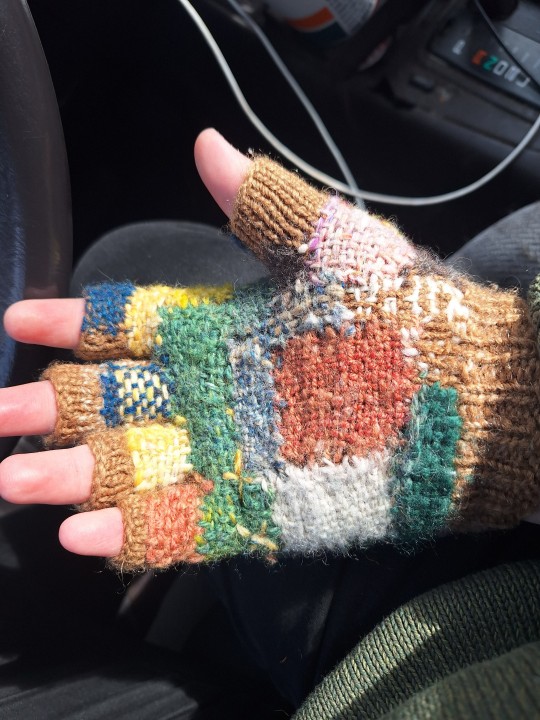
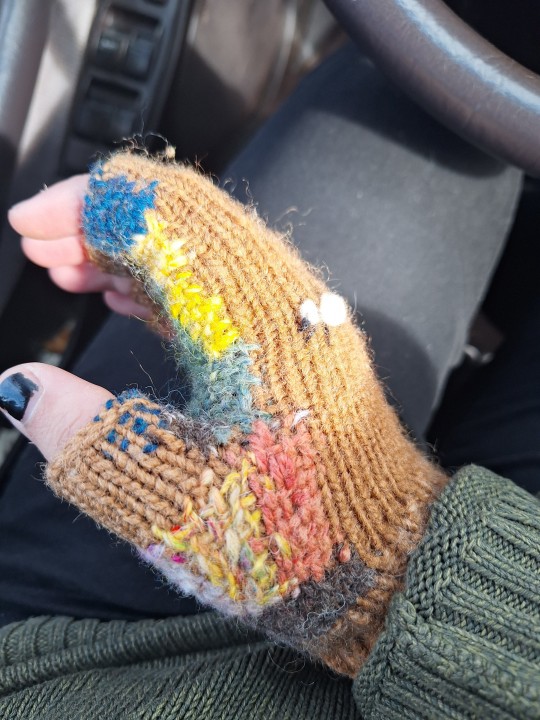
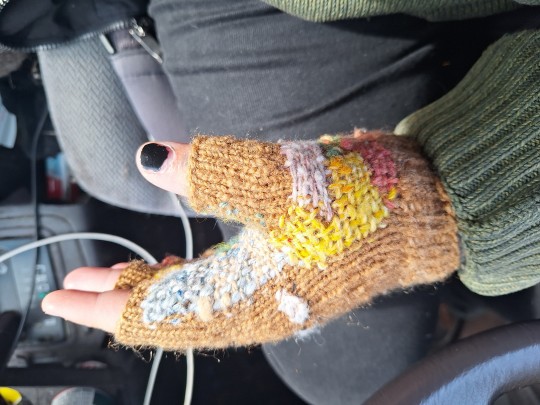

These definitely deserve an actual photoshoot but I'm never gonna do that, so here's the usual 'pulled over to take pictures briefly'. Finally got my gloves back to a wearable and warm state after a couple weeks of darning (hard to call them done; im sure theyll need more work in the future). There wasn't any damage really, just severe thinning from wear, so it was a much faster mend than it could have been.
The gloves are suffolk wool naturally dyed by myself with horse chestnut hulls, prepared and spun by myself, then knit into gloves with my own pattern. The mending yarn is also entirely handspun scrap, with some of it being naturally dyed as well.
One of the gloves lost some length (or at least I think it did; there's no way it would have taken me this long to notice they're different sizes if I just made them that way); the only real difference between the two gloves is that I mended the longer one with my darning loom and the other by hand after getting annoyed with the loom. So I guess my tension by hand left something to be desired. It's not noticeable when they're on me though, so I don't care very much. No longer matching in exact size is a small price to pay for gloves that are much warmer and also look very cool B)
Additionally, they are acting slightly as hand compression gloves now, due to the fact that the woven darning doesn't stretch as much as the knit gloves. It's strong upon blocking but does stretch out with wear--interesting though. I've not had luck with medical grade hand compression gloves, so I'm curious about knitting or weaving a dedicated pair, now.


242 notes
·
View notes
Text

Dyeing to meet the new year. Happy 2023! It's dyer's broom. I have hopes that if I use enough of it I may get the strong, true yellow of my dreams.
78 notes
·
View notes
Text
Wanna guess what I'm dyeing with?


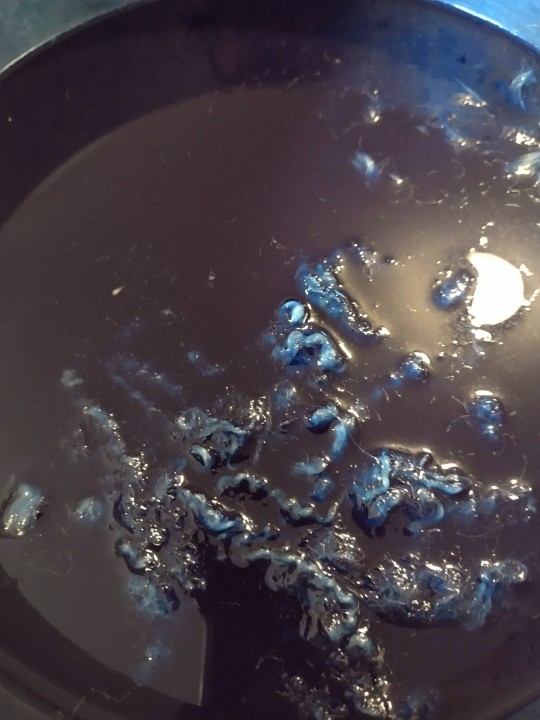
20 notes
·
View notes
Text

[ID: a cross stitch of a frog wearing a red mushroom hat, surrounded by small flowers and fireflies, on dark gray-brown linen /end ID]
pattern is amonita froggie by mama witch xstitch on gumroad, stitched on ~48ct linen i dyed myself with yarrow!
#cross stitch#xstitch#bibbit#natural dyeing#dye tag#it was tannin & alum. then yarrow. then a too heavy iron bath but its so swag
156 notes
·
View notes
Text
Natural Dyeing: A DIY Tutorial on How to Dye Clothes, Food, Crafts with Natural Dyes
In this post you learn how to dye clothes, food and crafts with natural dyes.
Do you love colors as much as I do? Do you want to add some vibrant hues to your life using natural and eco-friendly methods? If so, you are in the right place! In this tutorial, I will show you how to dye various materials, food, crafts and more with natural dyes. You will be amazed by the results and the fun you will…

View On WordPress
11 notes
·
View notes
Text



Here is a little peek into my adventures with natural dye. I attempted some eco-printing with scabiosa, and some sunflower petals. The scabiosa is really stunning and works so well. I wish I wasn't so experimental and that I took more time planning a design. But I still really love the outcome. I also did a few solids with cornelian cherry and poke-weed. Also, peep my dirty basement where I dry all my flowers 😅 Its cool and creepy at the same time.
107 notes
·
View notes
Text
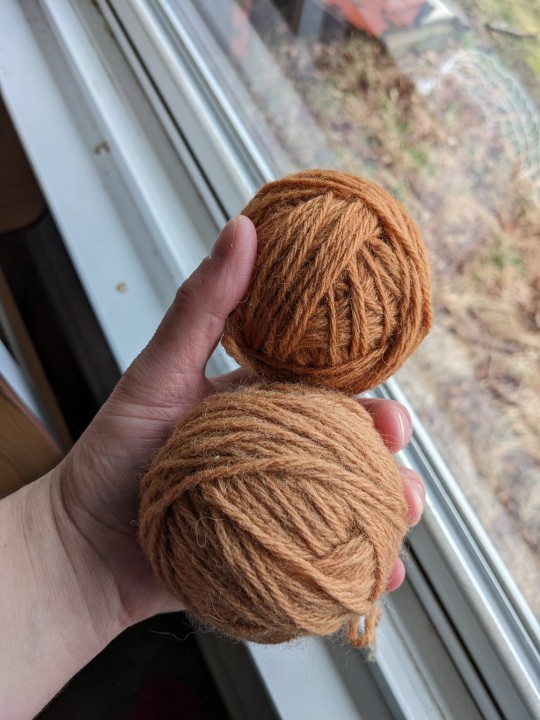
Finished yarn! 🧅🧶 Top one is yellow onion skins & bottom is red. This was so fun & interesting! I think I'll experiment with avocado next
8 notes
·
View notes